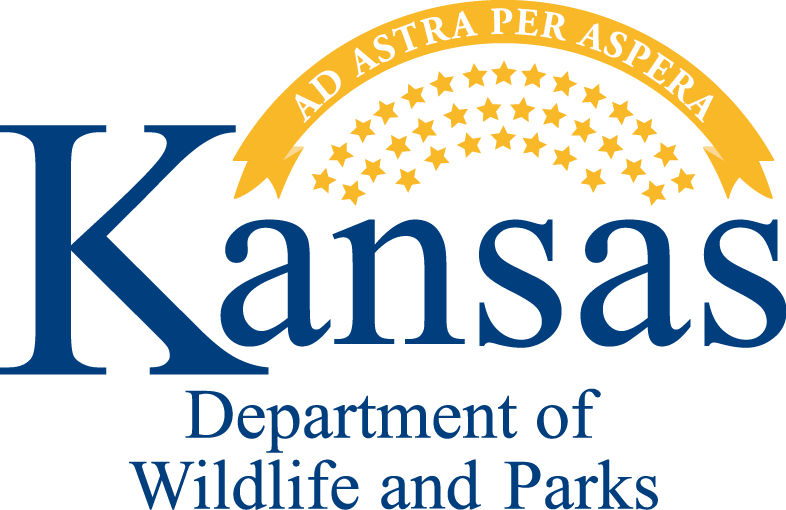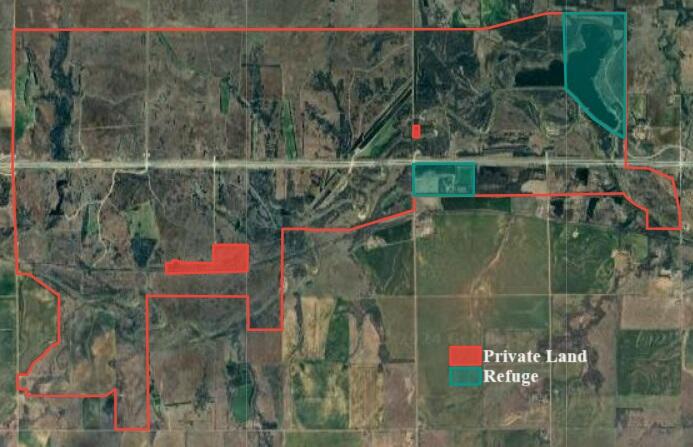Area News
The Kansas Department of Wildlife and Parks Commission approved new regulations relating to hunting on public lands. Designed to provide hunters with equal opportunities on limited public lands, the following regulations have been enacted:
- Baiting, and hunting over bait is now illegal on public lands. Bait is considered any grain, fruit, vegetable, nut, hay, salt, sorghum, feed, or other food or mineral capable of attracting wildlife. Liquid scents and sprays are not considered bait.
- Only two portable blinds or tree stands are allowed per hunter on public lands.
- Portable blinds and tree stands must be labeled with the owner’s name and address or KDWP number.
- Portable blinds may not be left unattended overnight on public lands.
- Decoys may not be left unattended overnight on public lands.
- Commercial guiding is prohibited on public lands and WIHA!
- There is no fall turkey season in 2023.
- Camping at our state fishing lake is now limited to 7 days. Must leave the area for 5 days before returning to camp again.
- Trail cameras are also prohibited on public lands.
- Electric or gas powered bicycles are NOT legal on or off-road on Wildlife Areas or WIHA.
There has been a new position funded at the Byron Walker Wildlife Area. In a partnership between Pheasants Forever and KDWP, a new Habitat Specialist has been brought in to help complete some more in-depth, habitat focused projects. There are several positions like this across the state and now it will benefit the Byron Walker Wildlife Area also!
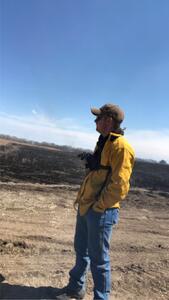
My name is Kolton Varner, and I am eager and excited to begin my work as the new Habitat Specialist for Byron Walker Wildlife Area. In December 2024, I graduated from Wichita State University with a bachelor’s degree in Ecological and Organismal Sciences. While in school, I worked for KDWP in two different positions. My first was from the summer of 2023, when I was an Ecological Technician based in Pratt. At this position, I traveled the state conducting population surveys of multiple species of snakes, turtles, frogs, bats, and other small mammals. In the fall of 2023, I started my second position with KDWP, which first introduced me to Byron Walker Wildlife Area. I was hired on as a Seasonal Conservation Technician. This position allowed me to get to know the area and everything that it takes to manage it. I learned how to use various management practices, tools, and equipment to produce higher-quality habitats for native wildlife. I also learned how to identify noxious weeds, invasive plant species and how to eliminate these threats to the prairie ecosystem. Since December of 2024 I have taken my passion for land management and native wildlife habitat to the next level by joining the Pheasants Forever Habitat Specialist program. My new position allows me to spend more time in the field and put more and better habitat on the ground.
The goals of the Byron Walker Wildlife Area are to increase the amount of quality habitat for wildlife and, in turn, increase the ability for greater/higher quality of outdoor recreation for the public. We accomplish our goals in numerous ways. To increase the amount of quality habitat, we implement management practices such as timber stand improvement, moist soil management, mechanical grassland clearing, chemical treatment of noxious weeds, food plots, and prescribed fire. We do many things to improve outdoor recreation as well. We maintain the campgrounds, vault toilets, area fencing, roads, marshes, and information kiosks so that those who are on the area can do so in a knowledgeable, enjoyable, and safe manner.
The biggest threats to grassland wildlife habitat are the woody and noxious invaders. Some of these threats consist of Eastern Red Cedar, Siberian Elm, Honey Locust, Johnson Grass, Old World Bluestem, and Sericea Lespedeza. These are just a handful of the threats we are up against. The biggest tools that we use to combat these threats are prescribed burning and rotational grazing. When pairing these two management practices, we are able to mimic the historic cycle of plant communities and various habitat types in prairie ecosystems.
I am excited to be a part of this fantastic area and am looking forward to all the good work that can be implemented. I am confident in myself and the rest of the Byron Walker team that we can conduct quality habitat improvements in a safe and efficient manner.
Drones, also known as unmanned aircraft system (UAS), have become popular in recent years. They are an excellent way to accomplish a variety of work and recreation tasks. However, there are places that they are prohibited. Our public wildlife areas are one of those places! Under Kansas regulations (KAR 115-8-13), the use of drones over KDWP lands is prohibited except in specific UAS areas located in some state parks.
There seems to be some confusion concerning refuges and how they need to be treated. There are two refuges on Byron Walker, one encompassing the eastern 2/3 of the lake, and one surrounding the headquarters.
New in 2019 the refuge surrounding the headquarters has been upgraded to "Refuge Area, Closed to All Activities." At the headquarters, hunters cannot park inside the refuge and then walk through the refuge to initiate a hunt outside the refuge. That means that sportsmen using Byron Walker cannot enter into these refuges for any purpose associated with hunting, this can include scouting, driving, setting stands, or even blood trailing. Further, with the new designation being closed to all activities, activities like mushroom hunting, bird watching, hiking, and training dogs are also prohibited.
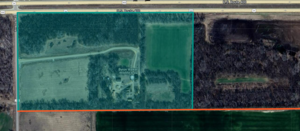
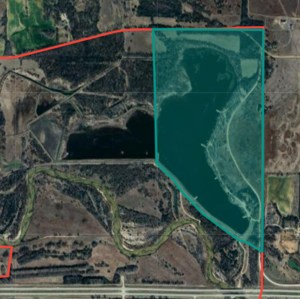
Headquarters Refuge Lake Refuge
The refuge on the east portion of the lake is designated as "No Hunting" however other activities are allowed. Camping within the designated campsites are located within this refuge, other activities can include fishing, hiking/exercising, birding, mushroom hunting, etc. These are wildlife refuges, so all wildlife residing in them are protected. Further, all wildlife residing within those refuges must not be disturbed or induced to leave the refuge. This can be most problematic on the lake where the boat ramps are located in the refuge, and one must travel through the refuge to reach the hunting area. This can be mitigated by avoiding waterfowl until you have passed out of the refuge. Further, giving the refuge a reasonable buffer while you hunt will help protect against wounded game making it into the refuge and creating a dilemma for the hunter as to whether to pursue it. Hunters need to understand that a refuge violation can lead to fines, jail time, loss of equipment and game, and revocation of licenses or hunting privileges. If you have questions about our refuges, please call the headquarters and talk to the manager at 620-532-3242.
Each year Troy Smith hires 3-5 seasonal employees to help with habitat, construction, maintenance, and other work on the area. Smith tries to get individuals either in the wildlife program in college or having graduated with a degree in wildlife. Employees gain valuable experience that will flesh out their resume's once they have a degree in hand. This experience may include prescribed burning, food plot establishment, moist soil management, range management, exotic plant removal, noxious weed spraying, water-level management, pest trapping, electrofishing, fish sampling, and a variety of necessary maintenance duties. This experience is invaluable in interviews. It also helps you understand how many of the topics you study in college relate to actual work in the field. Having served on several interview panels myself, it is often easy to determine which applicants have "in field" experience and understand the specific management direction of the Public Lands Division. If you are now in college or have your degree in hand but need this kind of experience, call the Byron Walker Wildlife Area office and see if there is a job waiting for you!
After our successful completion of Prairie NAWCA II (North American Wetland Conservation Act grant) project in 2019, we planned additional wetland development. I worked up plans for 5 potential new marshes/wetlands to build. It became apparent that more funds would be needed to accomplish those projects. I approached Mike Clover, District Conservationist for the NRCS in Kingman County and county Ducks Unlimited President, to ask if he had knowledge of any habitat projects completed in the county in the past 2 years. Between pond construction projects and grass plantings, he, and Pam Stasa (Conservation District Manager) came up with $120,000 worth of completed projects that we could use as match in a new NAWCA grant proposal. We have received official word that the application was accepted as part of Kansas Prairie Wetlands 8.
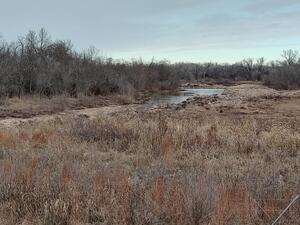
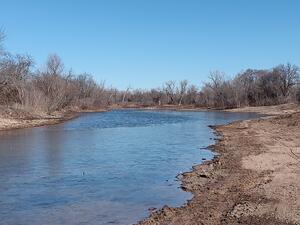
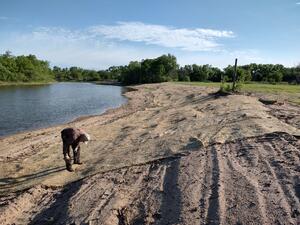
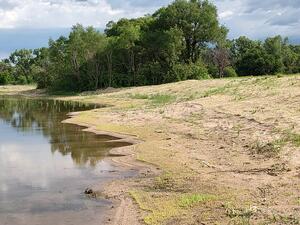
East Oxbow Marsh progression: contractors cleared trees and began digging, digging completed, planted native vegetation and laid erosion fabric on slope, new growth coming up through fabric and long the waters edge.
Update: Due to increased costs, the NAWCA will now only work on 2 of the original 5 wetlands. Work started on these wetlands December 10, 2023. The East Oxbow Marsh dirt work was completed February 9, 2024. The Youth Marsh dirt work has been suspended temporarily due to wet conditions and will restart later this summer with completion scheduled for September 30, 2024. The Phillips 66 money will now be put into a Wetland Grant and used to complete 3 wetlands on the 493 new acres purchased in 2022.
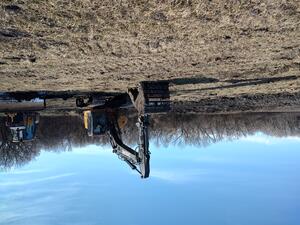
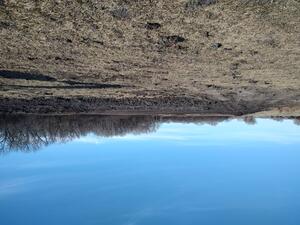
Youth March construction, work paused due to muddy conditions; work will resume in late summer when ground dries.
Our invasive tree control efforts have continued since 2020. Contractors cut trees in the two western-most sections on Byron Walker, concentrating efforts on removing invasive Honey Locust, Siberian Elm, and Eastern Red Cedar. They cut both young trees invading our grasslands as well as the adult trees that were the seed source of those invaders. This should create improved structure in the native timber left standing as well as reduce the spread of these species in those sections. We plan to continue this work using both contracted operators and agency staff and equipment with a goal of getting these species controlled on Byron Walker.
Update: Ducks Unlimited contacted me earlier this spring and gave us a grant for tree cutting in support of our existing wetlands. Eight sites were selected and work began March 11, 2024. Again, the same invasive tree species are being targeted with the hope of terminating the seed source on agency property and improving the hydrology by eliminating the competing plants. Overall some 500 acres stand to be improved if all 8 tracts are completed.
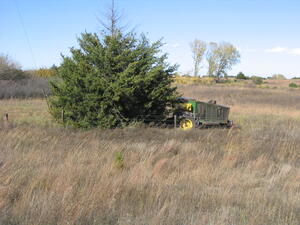
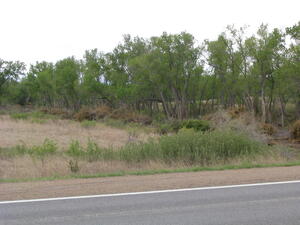
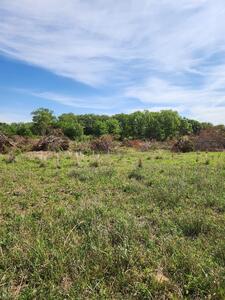
The South Fork Archers will hold their 3D shoots with an 8:00-9:00 a.m. trickle start.
Archery shoots by the South Fork Archery Club:
Mar 9 – Fun Shoot
April 13 – String shoot
May 11 – 3D Shoot
June 8 - 3D Shoot
July 13 – 3D Shoot
Aug 10 – 3D Shoot
Sept 14 - 3D Shoot
All shoots have a trickle start from 8:00 to 9:00 a.m. Concessions will be available. No Crossbows. No Alcohol on State Grounds.
Jayhawk Retriever Club: Hunt test scheduled September 15-17 on private ground.
